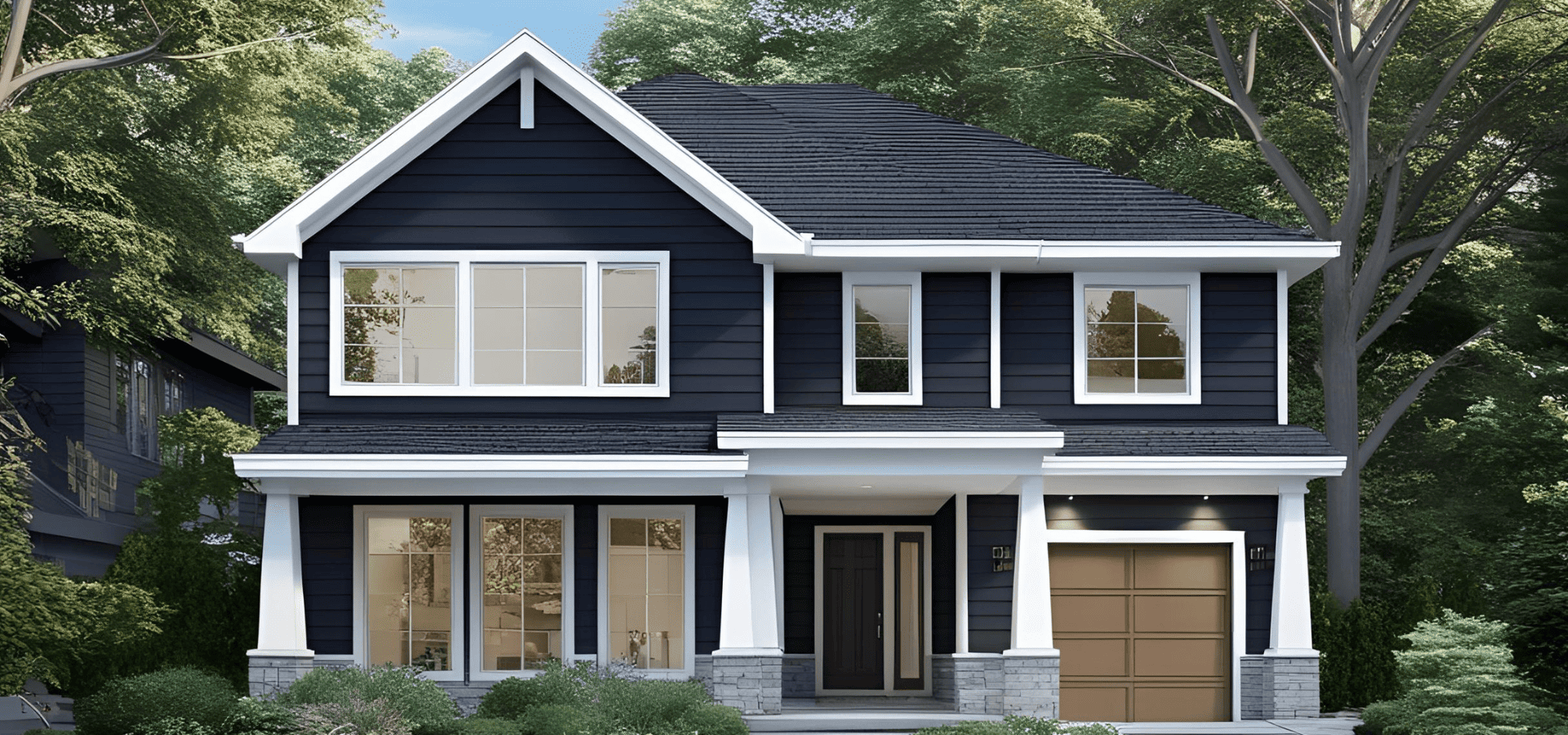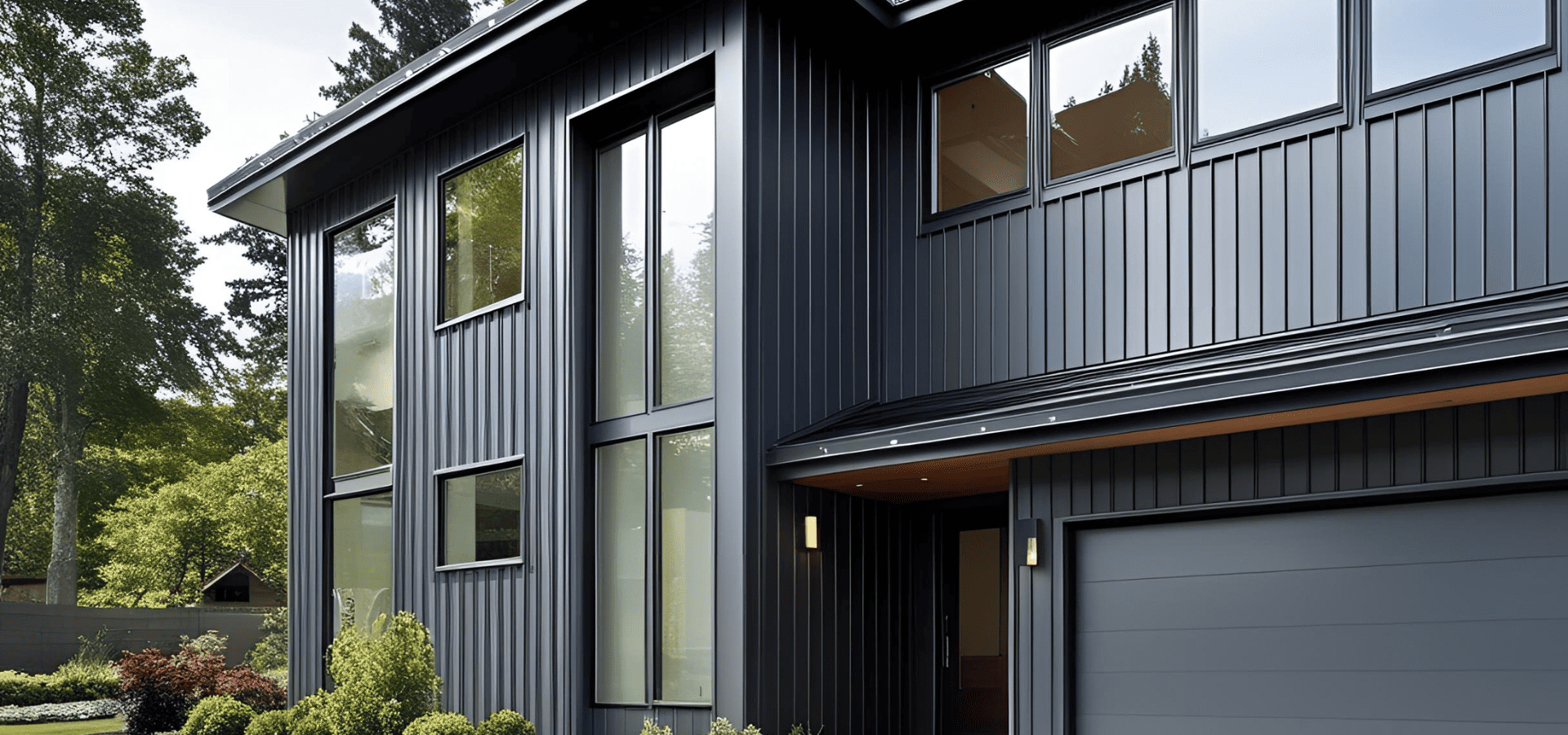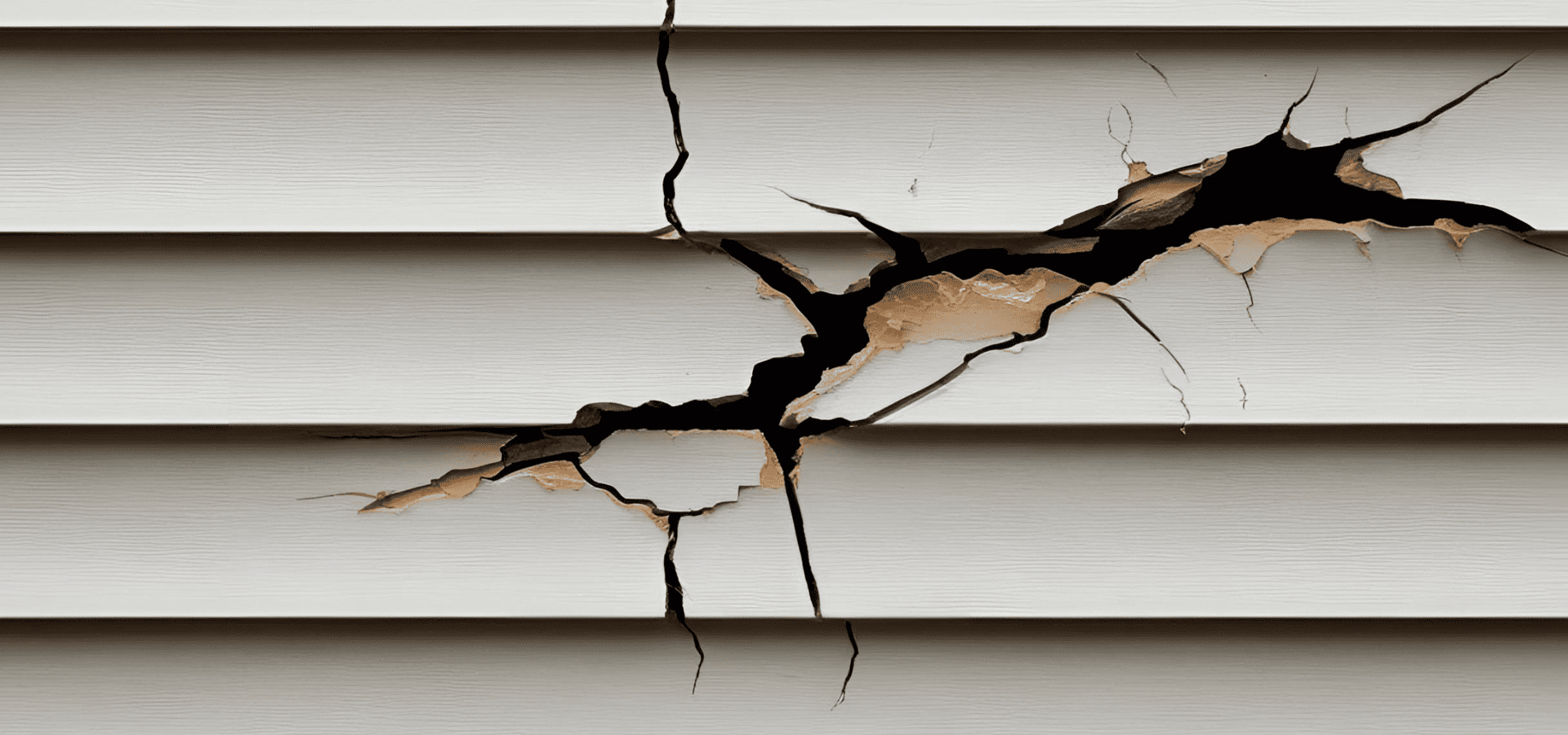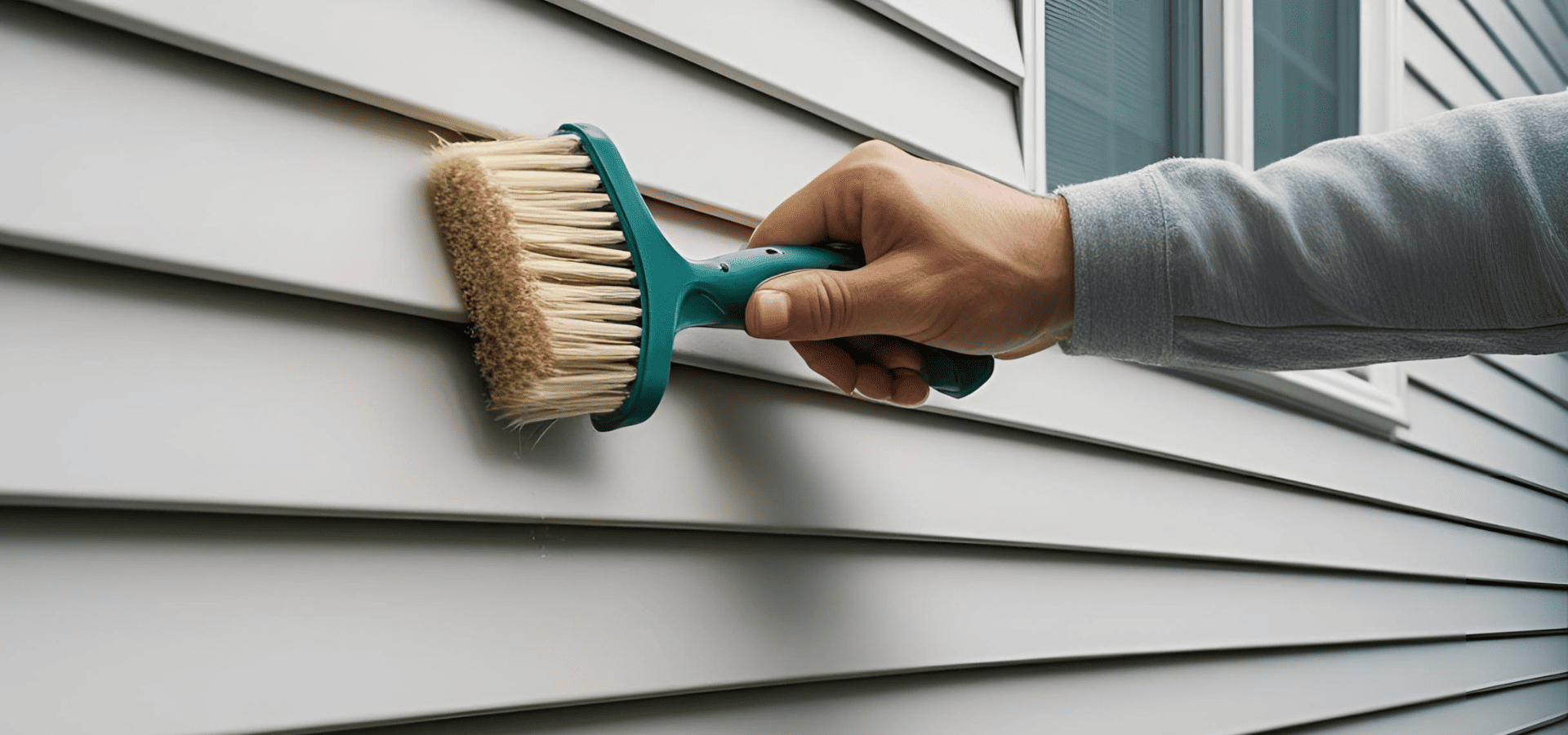3 Best Siding Options For Modern Homes
When it comes to modern homes, homeowners are usually looking for a sleek, contemporary look.
Modern, savvy homeowners also prefer practical options that are low-maintenance, durable, and offer value for money.
With increasing awareness of environmental issues, young homeowners are also increasingly prioritizing eco-friendly materials.
As such, when choosing siding for modern homes, simply achieving a sleek, contemporary aesthetic isn’t always enough. Instead, you also want options that are as practical and eco-friendly as possible.
Of course, not all siding materials can check all three boxes, but even checking just two out of three is enough for a siding option to be considered suitable for modern homes.
In this guide, we’ll be sharing the best siding options for modern homes. Not every option will check three boxes, but you can be sure that they’ll at least look great on your contemporary home and be practical in terms of maintenance and value.
1. Vinyl Siding

Vinyl has always been, and always will be, a very popular material simply due to its affordability and value for money.
It goes without saying that it won’t have the durability or longevity of higher-end options like steel, but it offers great value for money, with pretty good toughness and a relatively long lifespan at the lowest price on the market.
Over the years, vinyl has only gotten more popular as technology can now produce vinyl that’s more durable, more sturdy, and better able to weather the elements.
With modern protectants, discoloration is a thing of the past. Even if higher-end materials may inherently resist UV rays better, with a UV-resistant coating, vinyl siding can stand up to heat and the sun almost as well as much more expensive materials.
There are also insulated vinyl options that feature a foam backing. This foam backing doesn’t just enhance energy efficiency, but also blocks out sound and helps vinyl withstand impacts better.
Insulated vinyl is, as you’d expect, more pricey. But even then, insulated vinyl is usually still the most affordable siding option on the market.
In addition, unless there are damages, the only maintenance you need to perform is annual cleaning.
So in terms of practicality, vinyl is quite well-rounded. It’s not the most low-maintenance, the longest-lasting, or the toughest material. But it fares pretty well in all areas, especially for its price.
Aesthetically, vinyl is super versatile. It can mimic wood, brick, stucco, stone veneer, and even metal.
Essentially, whatever your modern home’s aesthetics are, vinyl can be manufactured to the appropriate texture and fit right in.
Overall, vinyl is a practical, low-cost material that can match the aesthetics of most modern homes.
The only area it’s lacking in is eco-friendliness, as vinyl is made from PVC, which has a relatively high carbon footprint in production and requires harmful chemicals to produce.
Vinyl also can’t be recycled.
Nevertheless, considering that it’s the cheapest material on the market, it’s still the best option for modern homeowners on a budget.
2. Metal Siding

Metal is sleek and brings an ultra-modern, industrial vibe to your home, so in terms of aesthetics, metal is unquestionably one of the best options for modern homes.
The good news is, there are also both budget and higher-end options to fit your budget, whatever it is.
Aluminum
Let’s start with the wallet-friendly option–aluminum.
Aluminum, despite being very wallet-friendly, usually costing around the same as vinyl, still delivers great performance.
Maintenance-wise, aluminum, as long as it’s properly sealed, will not corrode, so like vinyl, barring any damages, the only maintenance you’ll need to perform is cleaning.
Aluminum is also pretty durable, and can easily handle hot, harsh weather or rainy, humid climates.
It has a similar lifespan to vinyl too, usually 20-40 years.
The main issue with aluminum is that it’s not as sturdy as steel, so its softer nature means that it can dent relatively easily.
Even so, these dents don’t usually affect the structural integrity and can be easily fixed.
The best part is, we all know that metal is a recyclable material, so aluminum is very environmentally friendly.
Overall, aluminum is a similarly priced option as vinyl that’s also similar in lifespan and maintenance. The only difference is, aluminum can withstand harsh weather, though it may require more frequent minor repairs for dents.
Aluminum also has the edge in environmental friendliness though.
But don’t forget that vinyl is much more versatile aesthetically, so even though metal may be largely similar and is more environmentally friendly, it may not necessarily suit your home’s looks and design.
As such, I’d say both materials are mostly similar, and it boils down to your aesthetic preference.
Steel
Now for the higher-end option, steel is one of the most expensive siding materials, though of course, you are getting what you pay for.
In terms of durability, putting corrosion issues aside, steel is one of the most robust materials. It can withstand extreme weather and even seismic events, withstand impacts well, and won’t damage easily or discolor over time, and doesn’t allow pests or moisture to penetrate.
In addition, as long as you apply the necessary moisture-resistant coating, you won’t have to worry about corrosion.
It has a long lifespan too. With proper maintenance, it’ll protect your home nicely for at least the next 40-60 years, about twice as long as vinyl and aluminum.
So in terms of its practical aspects, steel is right up there among other high-end materials.
Finally, metal is recyclable, so naturally, steel is fully recyclable too, making it very sustainable and environmentally friendly.
Furthermore, if you don’t like steel’s natural texture, you can even apply finishes like wood, stone, brick, and so on.
Aluminum isn’t as versatile as it’s softer and can’t have more aggressive and detailed finishes like steel can.
All in all, with steel, you’re getting a top-tier durable material with a long lifespan that’s 100% recyclable and can mimic many different textures.
As such, steel is without a doubt one of the best siding materials for modern homes, even if you have to pay more for its quality.
3. Fiber Cement

Another reasonably priced siding option that offers great value for money is fiber cement.
Fiber cement is a mix of sand, cement, and cellulose fibers.
As you can probably guess, sand and cement combine to form a pretty sturdy material.
In terms of toughness, fiber cement will have little problem dealing with moisture, pests, impacts, and harsh weather, whether it’s freezing temperatures or extremely high temperatures. Basically, it’s almost as tough as it gets.
At 30-60 years, its lifespan is also longer than that of vinyl and aluminum.
And its natural UV resistance will help prevent any discoloration for the entirety of its lifespan, particularly if combined with a UV-resistant coating. In fact, even without the coating, its natural resistance and toughness will usually be enough to prevent discoloration, so the coating is optional and just an additional precaution.
Like the materials before this, fiber cement also requires very little maintenance. Besides annual cleaning and fixing any damages, the only additional maintenance required is repainting every 10-15 years.
The best part about fiber cement is that being naturally so robust, it doesn’t require additional coatings of any kind to protect against moisture or UV rays, which means no need to worry about the coating fading and having to reapply it.
It’s a little less versatile than vinyl when it comes to aesthetics, but it’s still one of the most versatile materials, being able to mimic wood, stone, stucco, and even metal.
Environmentalists will also be glad to hear that fiber cement is recyclable. Its long lifespan also reduces the need for frequent replacements, which will increase carbon emissions.
All in all, fiber cement is almost like tougher vinyl. It’s almost as versatile as vinyl in terms of aesthetics, but it’s much tougher, has a longer lifespan, and is more environmentally friendly.
Fiber cement is a mid-range option, so it won’t break the bank. It’s more pricey than vinyl, but you’re getting more value too.
In summary, vinyl is the best budget option, but if you have a little more cash to spare, fiber cement is worth the additional investment for your modern home.
Conclusion
Despite the sleek, contemporary look of modern homes, you don’t actually have to spend a lot on siding to get a fashionable and practical modern home.
Given the versatility of vinyl and fiber cement, there’s guaranteed to be a style that fits your home and matches your budget.
We chose these three options because they’re the ones that will cater to the majority, but these definitely aren’t the only options for modern homes.
If you have more cash to spare, you can opt for higher-end options like stone veneer to get more classy, sophisticated siding that’s also incredibly robust.
Don’t forget to take into consideration your local climate too. For example, if hail or sharp debris is a frequent occurrence, aluminum may not be so suitable as it dents easily, and you might want to opt for vinyl or fiber cement instead.
Finally, if you need help with installation, replacement, or even maintenance, you can always count on
Dallas Siding Pros!
You might also like



